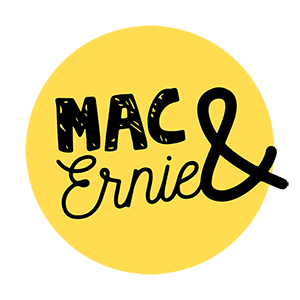Changes to the guidelines around influencer marketing
The Australian Association of National Advertisers (AANA) recently released new guidelines for agencies and marketers - specifically dealing with the growing popularity of using influencers to promote products and brands. For the AANA to get involved just proves how powerful influencer marketing has become over the past few years.
The guidelines come into play on 1st March so if you’re already using influencers or are thinking about approaching them, you should get yourself up to speed.
But first, what are influencers?
Influencers are individuals who are seen to be thought leaders in a specific niche. They are also people, like celebrities, who have an above average influence over a large number of people. Influencers are people who can help to build brands by association ie. Kim Kardashian only needs to post a photo of herself in a brand for it to send hundreds of thousands of women into a frenzy to have that brand.
In less extreme cases, there are many influencers out there who have more modest followings but have built up an air of trust within their community. They may be a ‘mummy blogger’ who has a reputation for being somewhat of an authority on the subject of being a mummy. Therefore when she posts about using a particular type of baby formula, her loyal followers might be influenced into buying that brand.
Agencies and marketers will often use these influencers to create social relationships between a consumer target audience and their clients’ brands. Ultimately you want consumers to have a genuine love for your brand but first they may need to see someone they ‘trust’ using it to be swayed into purchase. This is very easy to achieve using social media and blogs and it is clear that the AANA believes it is time that guidelines are put into place to protect consumers from this passive form of advertising.
What do you need to know?
Firstly the guidelines are just that - guidelines. It’s not a set of rules and, as such, will be open to misinterpretation and probably a little bit of misuse as advertisers settle into this new framework. The opening paragraph of the document states “This Guideline is a ‘best practice’ guide for marketers, their agencies and the community to help them understand what steps should be taken to ensure advertising and marketing communication is clearly distinguishable as such to the relevant audience.” So what does that mean?
The circumstances in which the guidelines are referring to, are any times that it needs to be made clear that the person promoting your brand or product is doing so for commercial gain. To determine this you need to ask yourself these two questions:
1. Do you have a reasonable degree of control over the material?
If you’re lucky, you have a tribe of loyal fans posting content on your behalf without you having to even ask. Those of you that don’t, need to know that if you arrange for someone to post an ‘ad’ for you, it is covered by these guidelines even if it is not paid for.
2. Does the material draw the attention of the public in a manner calculated to promote a product or service?
If you’ve asked someone to post an image or text that promotes your product or brand, it’s an ad. Money does not have to exchange hands for this type of post to be deemed advertising.
Scenario: A popular personality posts on Instagram an image of her drinking a certain brand of tea stating “it’s the only tea she drinks because of blah blah blah”. If she was sent the tea for the purpose of promotion, it is deemed advertising and she would be expected to state so in a reasonably overt way so that her followers would be aware that it’s an ad. This may look like “Thanks tea brand for sending me some samples today, it’s delicious! I think I’ve found my new favourite tea”. Another way that has been suggested is to use a hashtag like #ad or #advertising at the bottom of a post in much the same way that the word ‘advertorial’ can be added to the top of a magazine or news article.
What should I do if I’m already using influencers or hoping to?
You should read the guidelines and make sure that the influencer you are dealing with is aware of them too. It’s ultimately your responsibility to make sure that the post both suits their ‘style’ and covers you from any fallout. You should absolutely still consider influencer marketing as part of your mix because, guidelines or not, they can be incredibly powerful if chosen well. There are a heap of really good examples and scenarios in the guidelines which you can read by clicking here. Don’t worry, it’s only four pages long.
If you’d like to talk some more about using social media for business or how to source and contact the right kind of influencers for your business, please get in touch.
